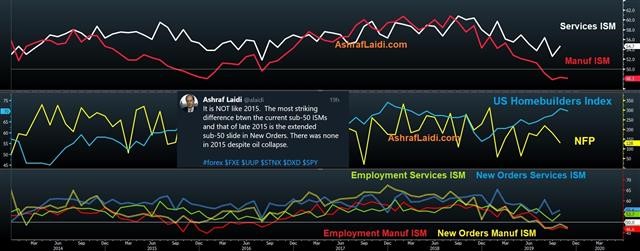Currencies scramble as trade stand-off looks to extend out a year, writes Adam Button.
Equity indices extended Monday's selloff after President Trump widened his verbal tariff attacks on France and weighed the possibility of delaying a China deal until after the 202 U.S. elections.
Forex Update
The Australian dollar (AUD) is the strongest currency of the day after the Reserve Bank of Australia (RBA) left rates unchanged and headed to a long holiday break with an opportunity to wait and see vis-a-vis the trade war.
The British pound (GBP) hit $1.30, now up 1.9% on the year as the second-best performing currency behind the Canadian dollar (CAD), which is up 2.4% vs. the U.S. Dollar. The U.S. Dollar/Japanese yen pair (USDJPY) extended its downfall, after failing a major quadruple confluence.
The Commodity Futures Trading Commission’s (CFTC) Commitments of Traders (COT) data highlights the large net-negative position in the New Zealand dollar.
The RBA retained a dovish bias in its statement but took out any urgency in regard to easing while holding its key rate at 0.75%. Two parts of the statement helped to lift the Australian dollar. The first was a nod to falling risks in the global economy due to an improvement in trade talks. That's a variable factor and could change in a big way by the time of the next RBA decision on Feb. 4.
The other notable change was the addition to the final paragraph of a nod towards the lagged effects of prior easing. That's a hint that policymakers would rather be on the sidelines and may view the 55% implied odds of a February hike (and 85% through March) as too high.
AUD/USD rose a quarter cent after the decision but the bigger move in FX came earlier in the day as the U.S. dollar slumped across the board. That came after a surprisingly soft ISM manufacturing index at 48.1 compared to 49.2 expected.
Another High-Profile Failure
Ashraf pointed out to USDJPY's recurring failure at 110. The pair dropped back below its 200-day moving average, eyeing 108.40 after another high profile failed attempt to break/reach 110, coinciding with the 55-, 100- and 200-week moving averages, and Oct 2018 trendline resistance.
The Cboe Volatility Index (VIX) jumped above its 100- and 200-day moving averages after posting its biggest daily percentage gain in four months on Monday. SPX is at risk of breaking the next crucial support of 3075/76. Below is a chart Ashraf posted yesterday after that manufacturing ISM miss.

President Trump took to twitter to blame the Federal Reserve and a strong dollar but manufacturing malaise is global and remains the major trouble spot. Lately there have been signs of an upturn or at least stabilization but this number is a dent in that theory.
CFTC COT Data
Speculative net futures trader positions as of the close on Tuesday. Net short denoted by - long by +.
EUR -61K vs -63K prior GBP -37K vs -32K prior JPY -40K vs -35K prior CHF -21K vs -16K prior CAD +20K vs +29K prior AUD -45K vs -47K prior NZD -36K vs -35K prior
The data was delayed because of the U.S. holiday and the surprise is the persistently large short in NZD. The turn in the kiwi continued on Monday and even with the round of risk aversion to start the week, NZD surged. That should have the shorts sweating.
Adam Button is co-owner and managing director of ForexLive.com and a contributor at AshrafLaidi.com. You can see Ashraf’s daily analysis at www.AshrafLaidi.com and sign up for the Premium Insights. Ashraf's Tweet on indices here.





















